ROYAL AIR FORCE Aerobatic Team, the RED ARROWS
Update: 2020/01/20 by Robert Kysela / CHK6
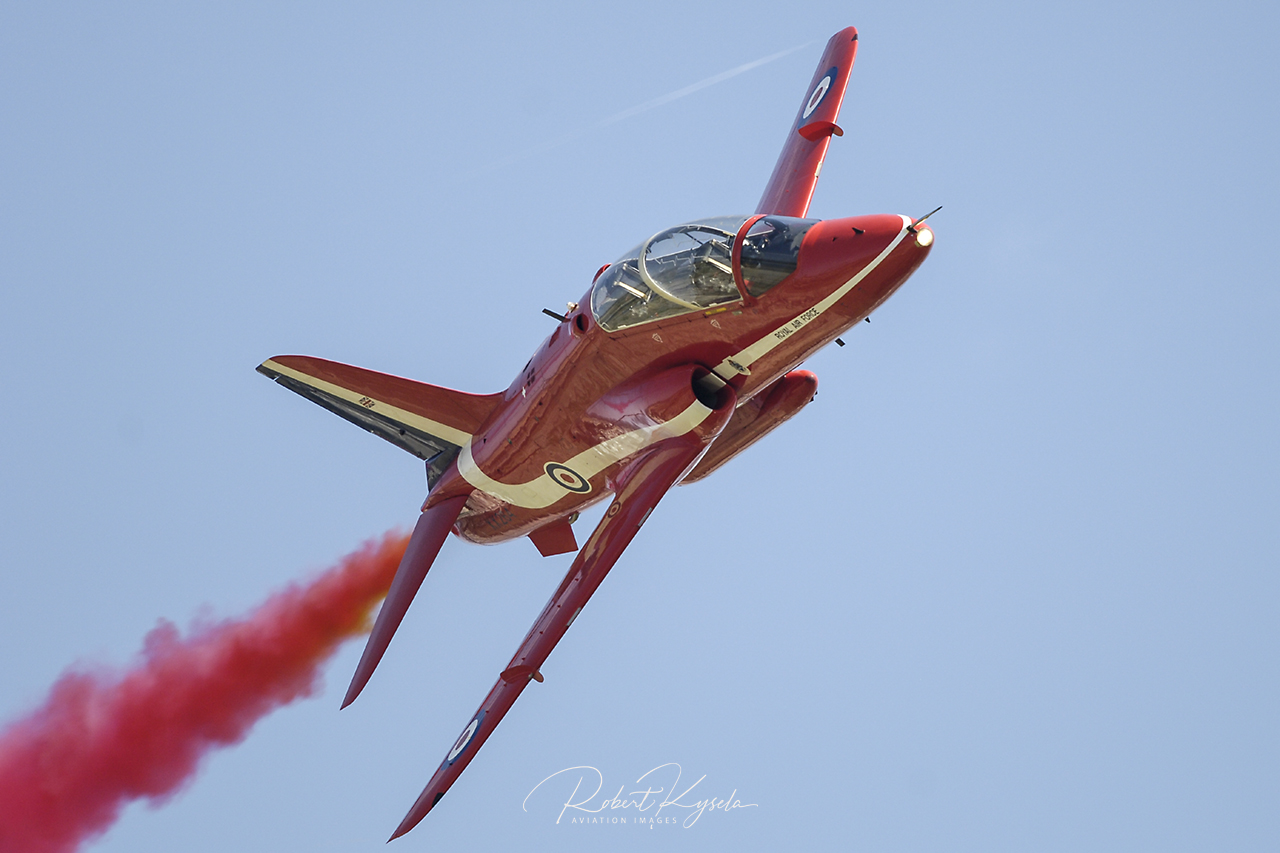
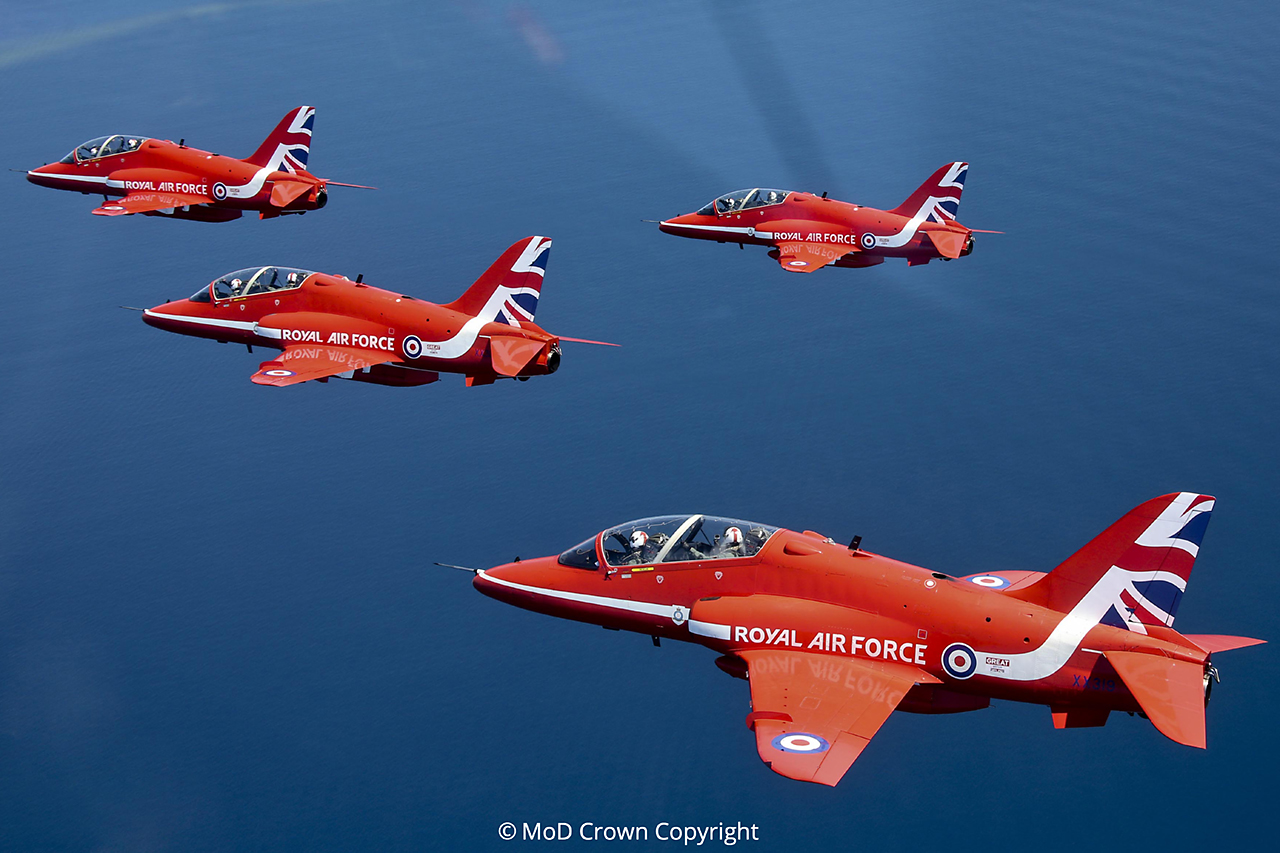
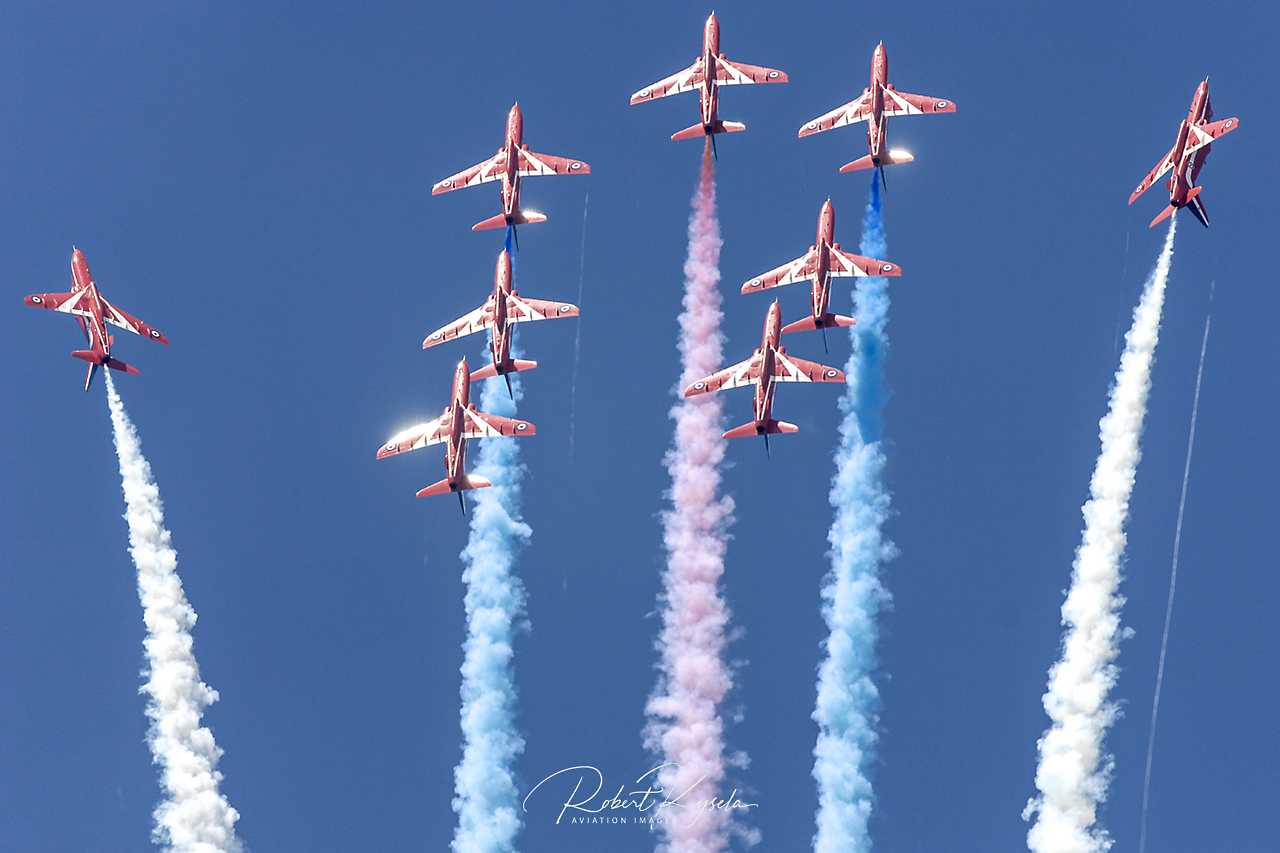
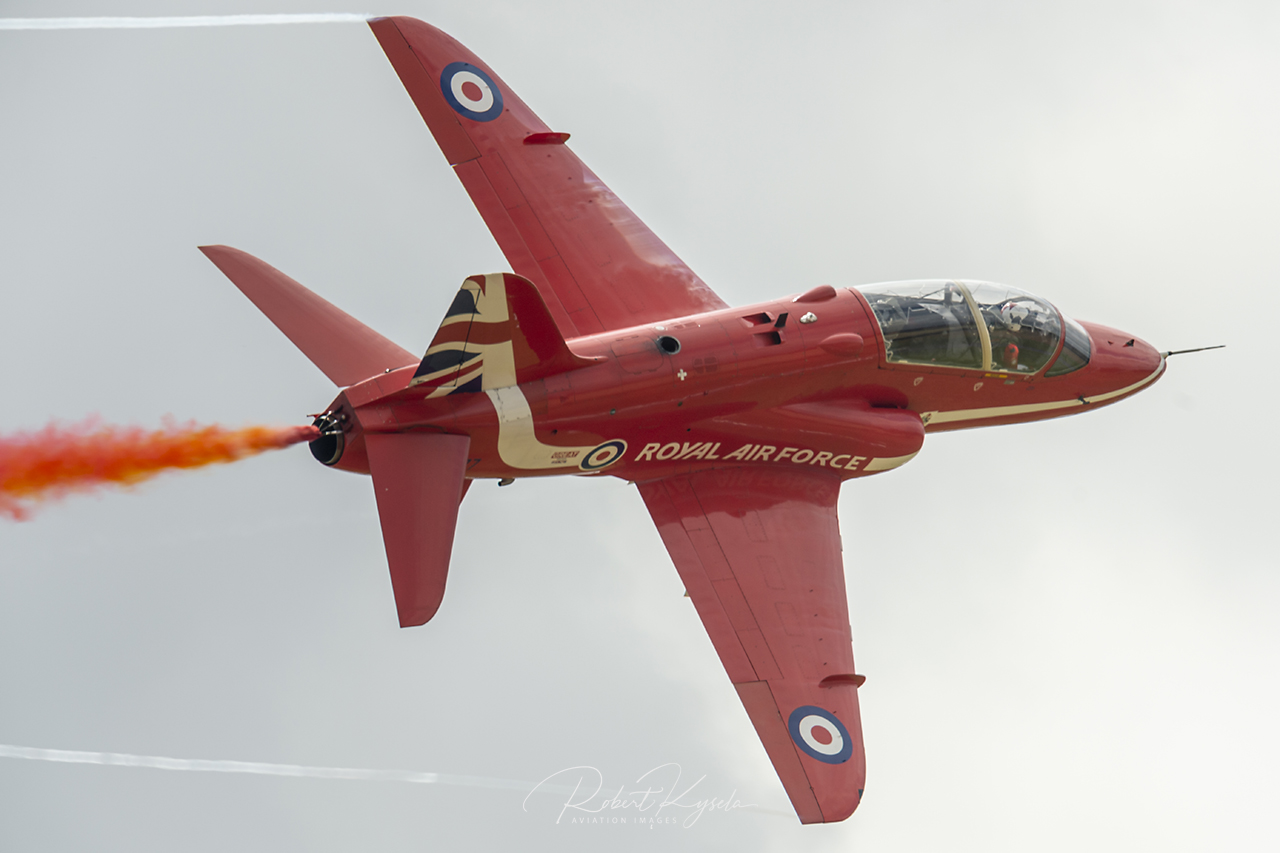
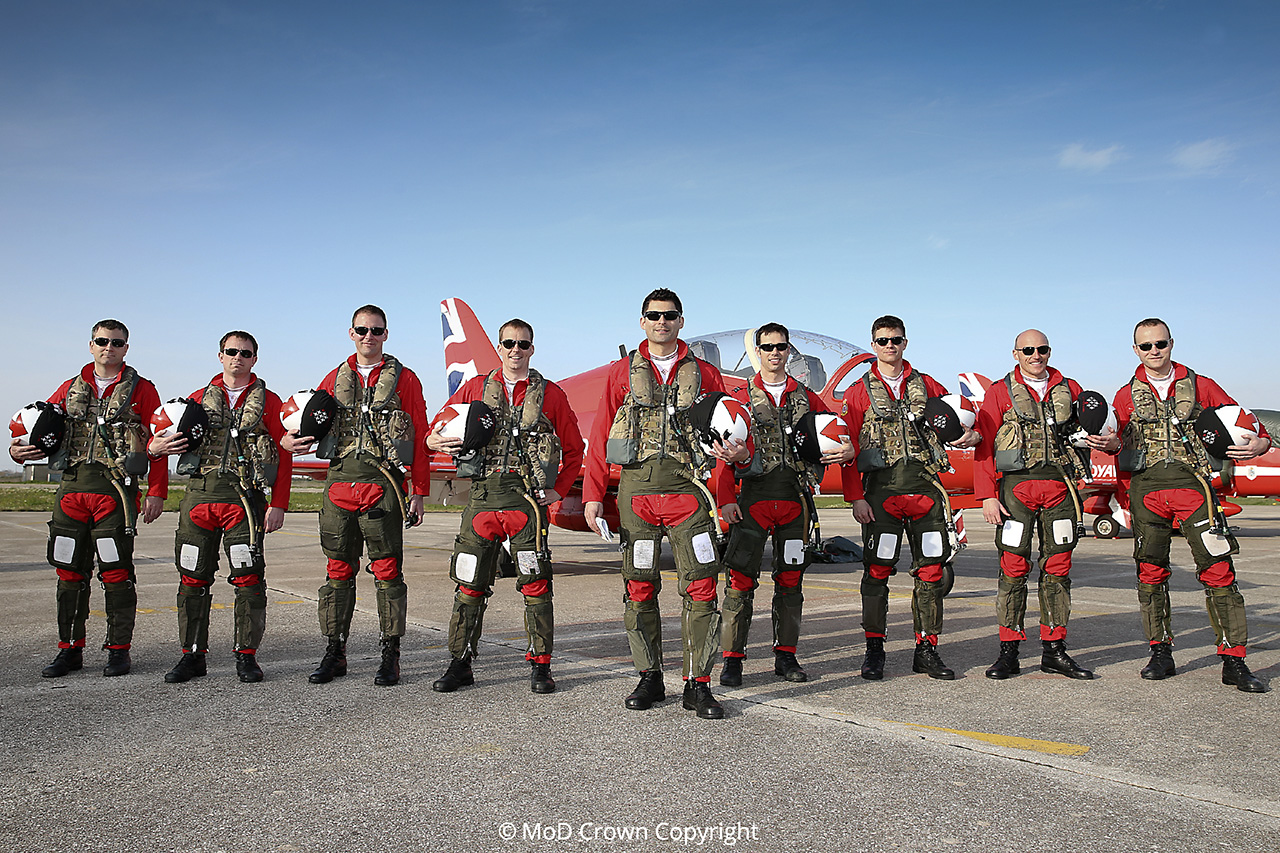
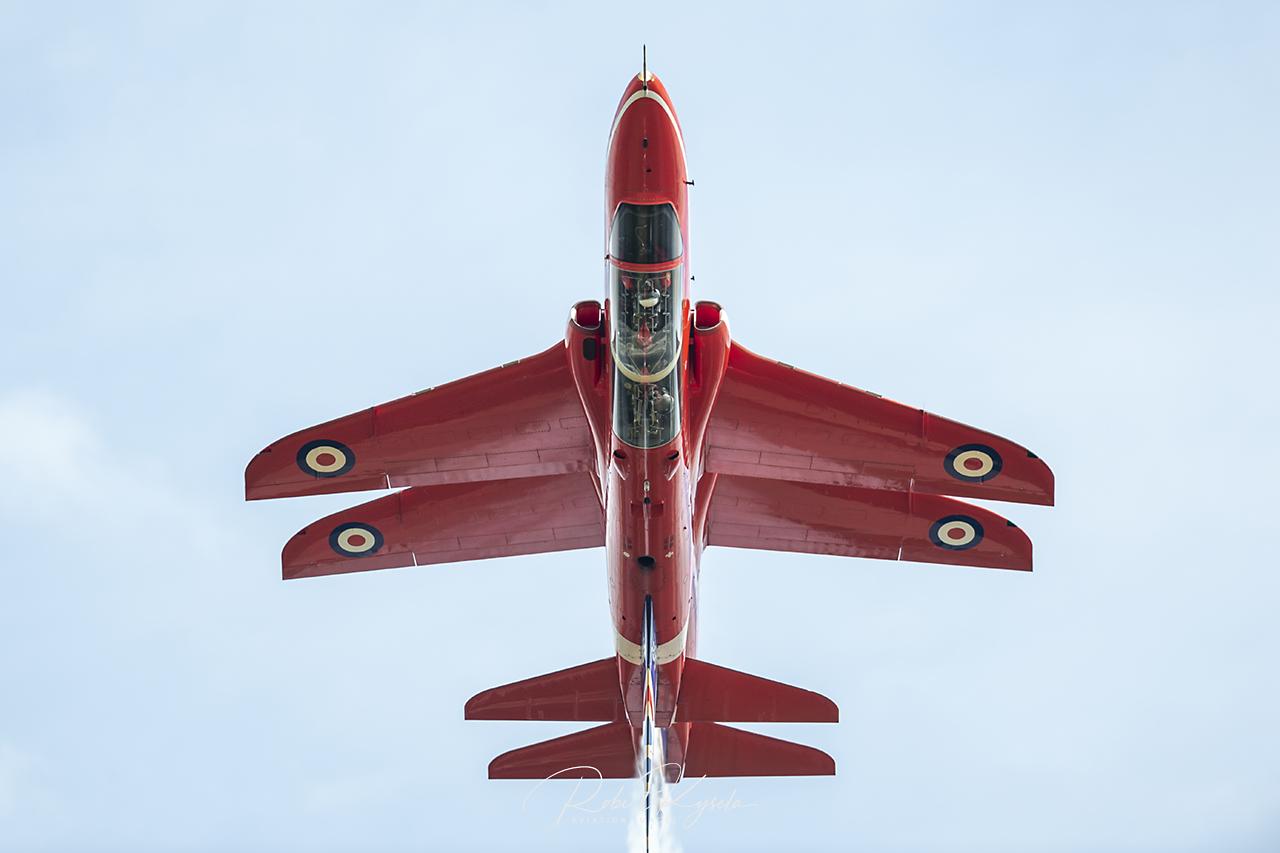
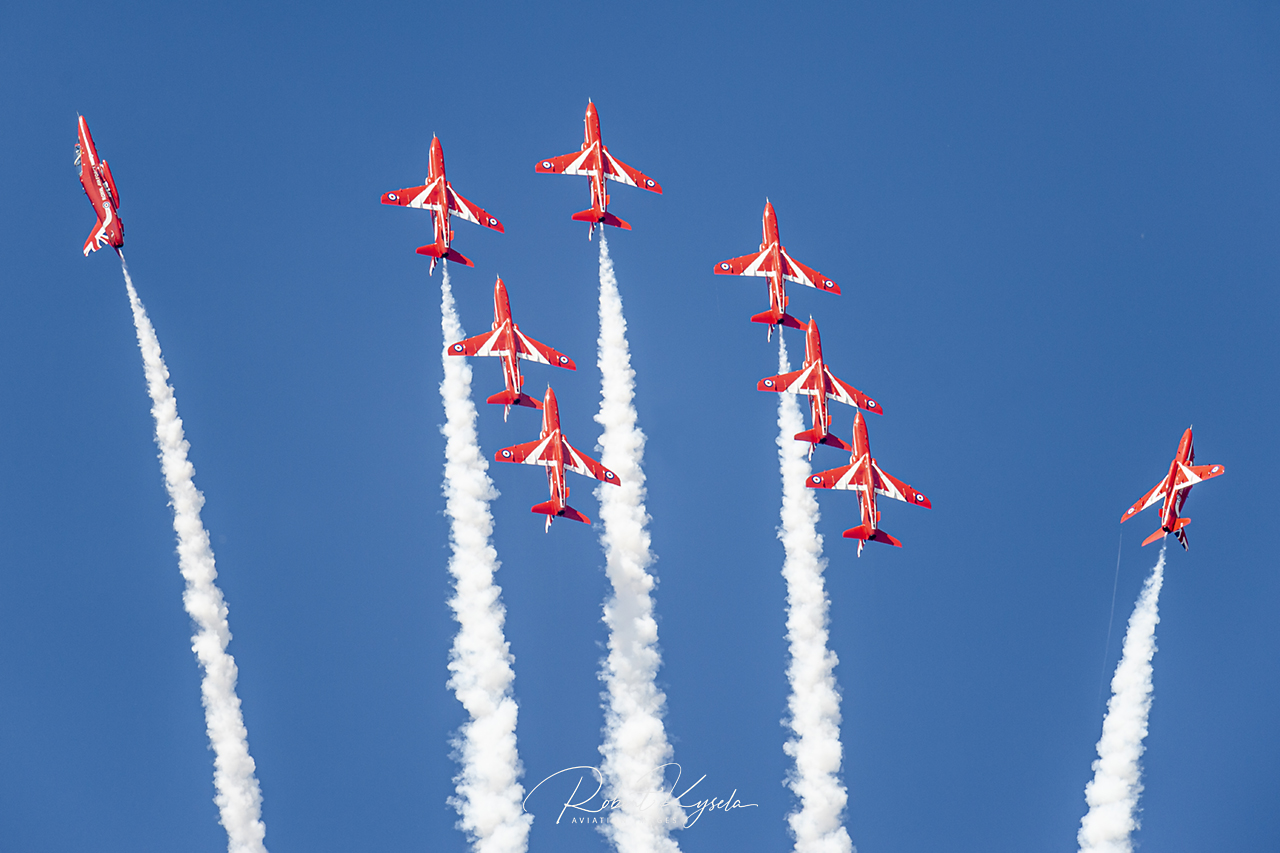
Within the genre of military aerobatic display teams the famous RAF RED ARROWS of Britain’s Royal Air Force (RAF) hold a very special place. It’s not just because the RAF RED ARROWS have been amongst the best in the world for the past 50 years, but because they are also amongst the most hard working display teams currently flying. Since their foundation the Reds have performed more than 4,650 displays, a record still unmatched by any other aerobatic display team. The reason why the Reds are so popular at home, and not as enthusiastically followed as some other teams such as the Italian Air Force FRECCE TRICOLORI or USAF THUNDERBIRDS, has nothing to do with a lack of interest but more so to do with typical British understatement. The British people have always had a very special relationship with their air force, so it is hardly surprising that their eyes genuinely light up when the pride of the RAF take to the skies over the British Isles. The RAF RED ARROWS were formed in 1965 as the official aerobatic display team of the Royal Air Force. Previous RAF display teams consisted of the BLACK ARROWS (Hawker HUNTER F.Mk6), the YELLOWJACKS (Folland GNAT T.Mk.1) and the RED PELICANS (Percival JET PROVOST T. Mk. 4). Forming the core of the newly formed RED ARROWS where the brightly painted yellow GNATS of the former YELLOWJACKS, a team that consisted of Flying Instructors from No 4 Flying Training School based at RAF Valley. The YELLOWJACKS had been in existence for only two years before the Reds were formed and their Folland GNATS’s repainted in the bright red and white scheme that has now become symbolic of the RAF RED ARROWS team. The Reds used the small two-seat GNAT until 1979 when it was replaced by the agile and reliable BAE HAWK T.Mk. 1a.
The team includes 120 support personnel whom provide aircraft maintenance, logistics, public relations, and of course flight operations
R. Kysela
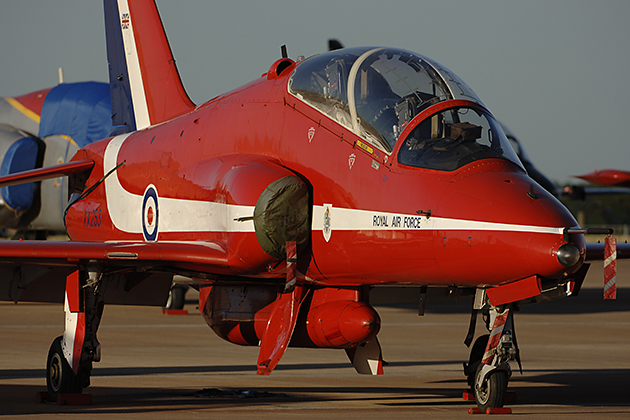
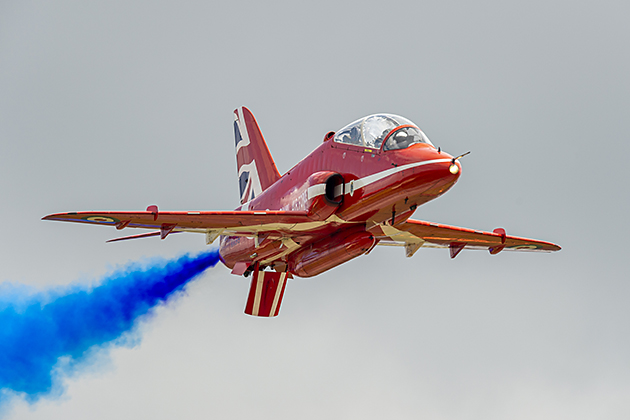
The RAF RED ARROWS consists of nine (RED 1 to RED 9) BAE HAWK T.Mk.1a aircraft. There are approximately thirteen Hawk T.Mk.1 aircraft on the Squadron, these can be flown as spares to destinations ready for a display or flypast. The RED 10 role is primarily Ground Safety Supervisor and he is responsible for advising RED 1 of the conditions at a display site before the team depart for the display. He will check wind conditions and weather before and during the display. His secondary role is of RED ARROWS Commentator, giving the audience information on the role of the RED ARROWS, it’s pilots and the manoeuvres within the display. He will fly a spare jet, as can Officer Commanding RAFAT (Callsign: RED 11), however this is not his primary role. Up to eleven jets (two spare) can be taken depending on serviceability. The team includes 120 support personnel whom provide aircraft maintenance, logistics, public relations, and of course flight operations. From 1965 to 1982 the RAF RED ARROWS were based at RAF Fairford, however since 1983 RAF Scampton has been home for the RAF RED ARROWS. It was from RAF Scampton that No. 617 Sqn, the famous Dambusters, flew their raids against the Eder, Mohne, Sorpe and Ennepe dams during World War Two.
At the end of each display season, the Reds relocate to RAF Akrotiri in Cyprus, where they conduct an intensive training phase (flying up to 3 displays each day) in preparation for the forthcoming display season, it is also a time when any new members of the team are fully briefed. Upon completion of the training phase the team will receive formal permission from Commander in Chief (CIC) of the RAF to perform flying displays for the general public, but not before the CIC himself has confirmed his confidence in the skills and professionalism of the team by going for a flight in the back seat of a RAF RED ARROWS HAWK.
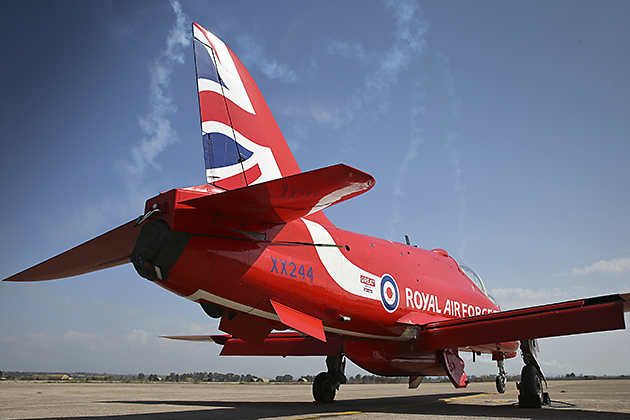
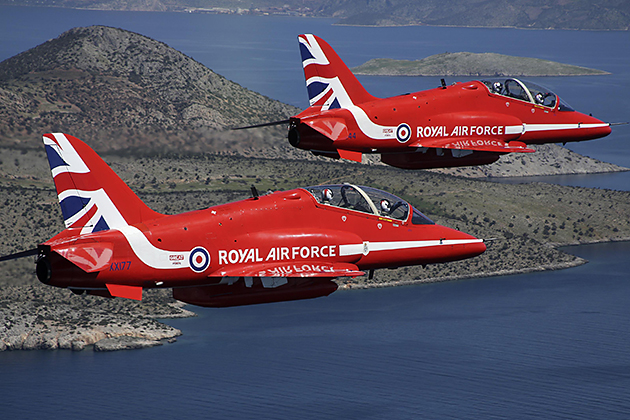
To become a member of this elite team, a prospective RAF RED ARROWS pilot must show he/she is more than just a team player, they must also possess a flawless flying record of 1,500 hours in RAF fast jet aircraft, such as Panavia TORNADO Gr.Mk. 4 or Eurofighter EF-2000 TYPHOON. Some 30 to 50 applications are received each year for selection into the team of which only 9 are shortlisted. Following intensive training in Cyprus, (a candidate must to be able to fly in each of the teams allocated positions) a series of rigorous interviews is then conducted by the team leader with the final decision being (democratically) made by team members as to which candidate will be selected as the new team member for the forthcoming season. The new team member will stay within the team for a maximum period of three years, after this he/she must return to his/her original unit/squadron. The future team leader will leave the squadron after his tour of three years to take up at least one other post outside of the squadron. He will then be invited to return as RED 1 if selected by the RAF. As of 2015, the current team leader of the RAF RED ARROWS (RED 1) is Squadron Leader David Montenegro, who joined the team in 2009.
The first prototype HAWK made its maiden flight on the 21st August 1974 and since then nearly 1,000 aircraft of this type have been manufactured that are in service with 18 different operators.
R. Kysela
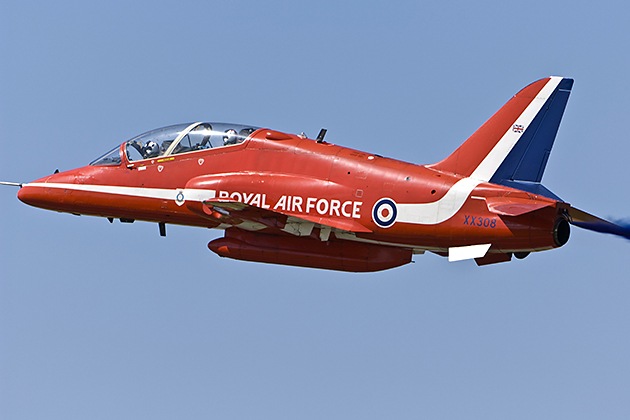
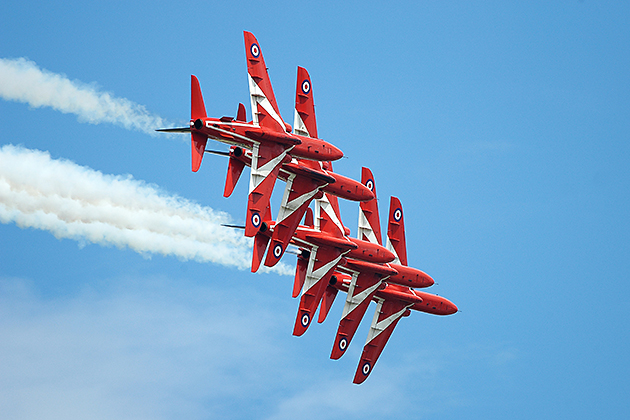
The BAE HAWK T.Mk.1a is the standard advanced jet trainer of the RAF. Its single Rolls Royce ADOUR Mk. 951 turbofan engine is rated at 6,500 lbs (29 kN) of thrust, and provides this nimble aircraft with a considerable level of speed, agility and versatility. The first prototype HAWK made its maiden flight on the 21st August 1974 and since then nearly 1,000 aircraft of this type have been manufactured that are in service with 18 different operators. The HAWK is still in production (in the UK by BAE Systems and in India under license by Hindustan Aeronautics Ltd [HAL]). In addition to an advanced trainer role, the HAWK is also available as a light ground attack aircraft (HAWK 100 series), and even as a lightweight single-seat multi-role fighter (HAWK 200 series). The largest operator of the HAWK is, beside the RAF, the US Navy where a heavily modified version, built under license by the Grumman Corporation as the T-45 GOSHAWK is used for advanced carrier training. The latest variant is the HAWK Mk.128 (also known as the T. Mk2), which has been in RAF service since 2006. The HAWK was originally designed for high sub-sonic speed (Mach 0.88) however it can easily achieve supersonic speed in a shallow dive. The impressive speed and handling characteristics of the HAWK really pay off for high-performance aerobatic teams such as the RAF RED ARROWS. The Royal Saudi Air Force (RSAF) display team, the ROYAL SAUDI HAWKS also utilise the HAWK, while the four-ship team of the Finish Air Force, the MIDNIGHT HAWKS, are also equipped with the same aircraft.
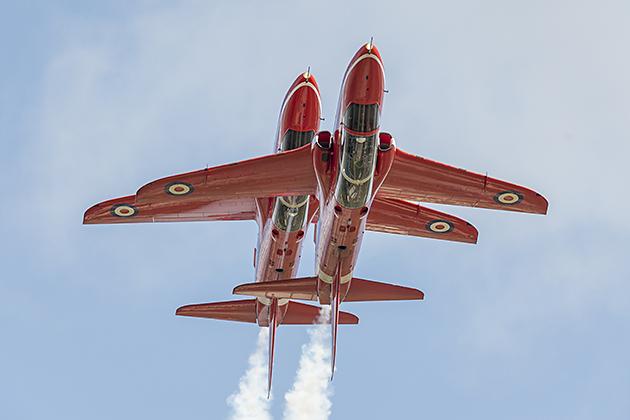
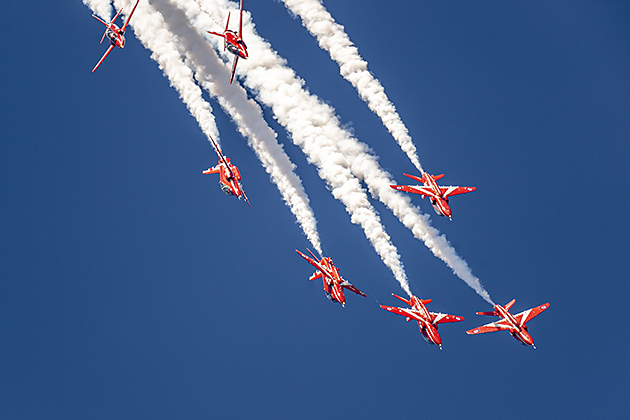
The current RAF RED ARROWS display includes a wide variety of impressive formations and maneuvers. Three different types of displays are available to the team leader, these displays are selected depending on weather conditions and the shared airspace available at the time. In optimum weather conditions a full display can be performed which includes all vertical maneuvers such as the Champagne Split or Heart & Spear, if restricted to a cloud base of only 5,500 feet then a slightly reduced program is performed (the so-called Rolling Display), if the cloud base is only 2,500 feet then the team will perform what is known as their “Flat Program”. Full displays last for more than 20 minutes and consist of no less than 23 different formations and maneuvers.
To watch the RAF RED ARROWS is always a great pleasure, regardless of where you see them or what weather conditions are!
R. Kysela
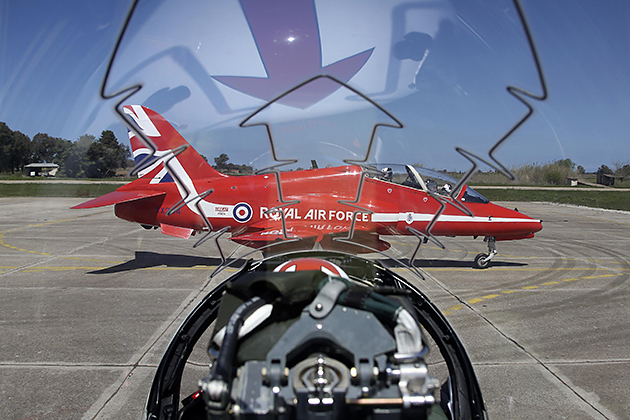
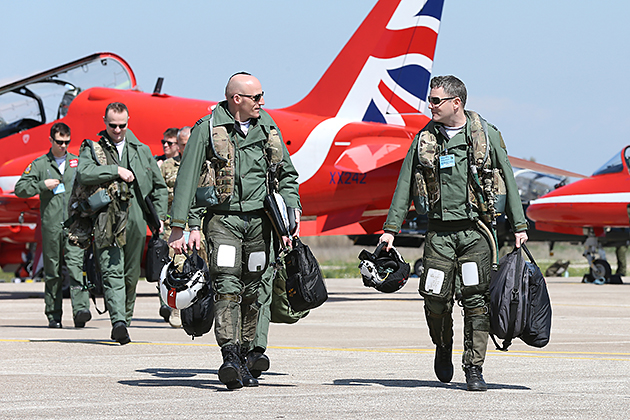
VERDICT:
The RAF RED ARROWS are not just a great aerobatic display team, they are a team that are clearly amongst the best in the world, with performances totaling almost 5,000 displays in the past 50 years, their record speaks for itself. What is even more important (especially for me) is the fact, that the RAF RED ARROWS have always maintained an incredible level of quality and consistency in their stunning displays. Having witnessed their performances at airshows for more that 20 years and I have not seen one display that I would call average, unfortunately the same cannot be said about other aerobatic display teams.
To watch the RAF RED ARROWS is always a great pleasure, regardless of where you see them or what weather conditions are!
* Special thanks goes to the RAF RED ARROWS PR Officer, Mrs. Jo Pearson, for her outstanding support!

